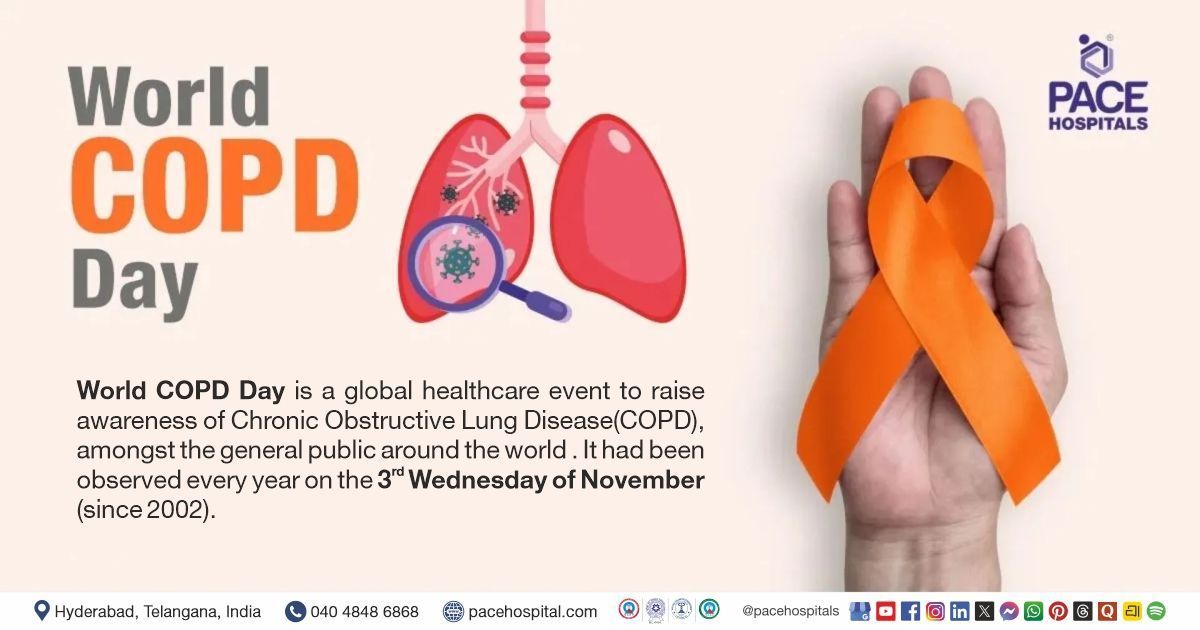Cabergoline – Uses, Side Effects, Composition, and Dosage
PACE Hospitals
Manufactured by: Several pharmaceutical companies manufacture cabergoline globally. Notably, Pfizer manufactures Cabergoline under the brand names Dostinex. Teva, Apotex, AdvaCare, and others manufacture cabergoline globally.
Class: Dopamine receptor agonists
Overview
Cabergoline is sold under the brand name Dostinex, that is used to treat hyperprolactinemia which is a condition characterized by high levels of prolactin, a natural substance which helps breast-feeding women to produce milk. Excess levels of prolactin can cause symptoms such as infertility, sexual problems, and bone loss in women who are not breast-feeding. Cabergoline tablets belong to the class of medications called dopamine receptor agonists and work by decreasing the amount of prolactin in the body. This drug is also used sometimes to treat Parkinson's disease, a nervous system disorder that causes difficulties with movement, muscle control, and balance.
Cabergoline Composition
The active ingredient of cabergoline tablet is cabergoline, its chemical name is 1-[(6-allylergolin-8β-yl)-carbonyl]-1-[3-(dimethylamino) propyl]-3-ethylurea.

Cabergoline Tablet Uses
Cabergoline is indicated for various conditions related to hyperprolactinemia and lactation management.
The following are some of the cabergoline uses:
- Treatment of hyperprolactinemic disorders: This drug is indicated for treating hyperprolactinemic disorders which are either idiopathic (unknown cause) or due to pituitary adenomas (noncancerous tumor which develops in the pituitary gland).
- Inhibition of physiological lactation: This drug is used for preventing the onset of physiological lactation in the puerperium (it is a six-week period after childbirth during which a woman's body undergoes physiological changes for returning to a pre-pregnancy state) for clearly defined medical reasons. These medical reasons include stillborn baby birth, neonatal death, cleft lip or palate of the baby, severe acute or chronic mental illness, medical conditions, and maternal disease which may be transmitted to the baby.
- Parkinson’s Disease (Less common use): It is a dopamine D2 receptor agonist that reduces motor symptoms, but because of newer treatments and concerns about cardiac valvulopathy from prolonged high doses, it is not as frequently prescribed.
- Acromegaly (Adjunctive or primary therapy): In certain patients, especially those with mixed GH/prolactin-secreting tumors, cabergoline lowers growth hormone (GH) and insulin-like growth factor-1 (IGF-1).
Guidelines to follow while taking a cabergoline tablet
- The drug is available as white, capsule-shaped tablets containing cabergoline 0.5 mg, it is administered orally, usually taken with or without food two times a week. The physician may start with a low dose of cabergoline and gradually increase the dose, but not more often than once every 4 weeks. Patients must not stop taking cabergoline without informing the physician, the physician may gradually decrease the dose.
- Patient must inform the physician if allergic to cabergoline, ergot medications such as bromocriptine (Parlodel); dihydroergotamine (Migranal), ergoloid mesylates (Hydergine), ergotamine (in Cafergot, in Ergomar), methylergonovine (Methergine), methysergide (Sansert), and pergolide (Permax); any other medications, or any of the ingredients in cabergoline tablets.
- Informing the physician and pharmacist about any additional prescription and over-the-counter drugs, vitamins, nutritional supplements, and herbal products the patient is currently taking or intends to take while taking cabergoline. Doctors may need to adjust drug dosages or monitor them closely for side effects.
- Patient has to inform the physician if he/she uses or have ever used street drugs and if ever had high blood pressure (Hypertension) or any condition which causes thickening or scarring in lungs, heart, or abdomen. The patient has to also inform if ever had heart valve disease. The physician may examine and will order tests to see if the heart valves are healthy. If the patient has signs of heart valve disease or any of these conditions, the physician may inform the patient not to take cabergoline.
- Patients need to inform their doctor if they have a history of liver disease. Patients have to know that cabergoline may cause dizziness, lightheadedness, and fainting while getting up too quickly from a lying position. This is more common on the initial days of taking cabergoline. To avoid this problem, get out of bed slowly, resting the feet on the floor for a few minutes before standing up.
- Immediately informing the physician when pregnant or planning to become pregnant, breastfeeding, or plan to breastfeed, as cabergoline may slow or stop the production of breast milk.
- Some people who were treated with cabergoline have developed gambling problems or other intense urges or behaviors, such as increased sexual urges or behaviors. There is no proper information to tell whether people developed these problems because they took the medication or for other reasons. Immediately inform the physician when the patient develops an urge to gamble that is difficult to control, having intense urges. Patients have to inform family members about this risk so that they can call the physician, even if the patient does not realize that gambling or any other intense urges or unusual behaviors have become a problem.
Cabergoline Mechanism of Action
It is a dopaminergic ergoline derivative with a potent and long-lasting prolactin-lowering activity. It works by directly stimulating the D2-dopamine receptors on pituitary lactotrophs, thus inhibiting the secretion of prolactin. In addition, cabergoline exerts a central dopaminergic effect via D2-receptor stimulation at oral doses higher than those effective in lowering serum prolactin levels.
Cabergoline Side Effects
Like every drug, cabergoline may also cause some side effects. The following are some of the cabergoline tablet side effects:
- Nausea
- Heartburn
- Constipation
- Vomiting
- Dizziness
- Breast pain
- Tiredness
- Painful menstrual periods
- Burning, numbness, or tingling in the arms, hands, legs, or feet
Serious side effects of cabergoline
The following are some of the serious side effects caused by cabergoline:
- Shortness of breath (SOB)
- Difficulty breathing when lying down
- Chest pain
- Cough
- Decreased urination
- Swelling of the hands, feet, ankles, or lower legs
- Abnormal vision
- Pain in the back, side, or groin
- Lumps or pain in the stomach area
Note: When a patient experiences any of the above symptoms, he/she has to immediately contact the consulting physician.
Cabergoline Dose and Safety Guidelines
Cabergoline dosage in adults
- The recommended initial dosage of cabergoline is 0.5 mg per week given in one or two doses (e.g. on Monday and Thursday) per week. The weekly dose can be increased gradually by adding 0.5 mg per week at monthly intervals until an optimal therapeutic response is achieved. The therapeutic dosage is generally 1 mg per week and ranges from 0.25 mg to 2.0 mg per week.
- Based on patient tolerability the weekly dose may be given as a single administration or divided into two or more doses per week. Division of the weekly dose into multiple administrations is suggested when doses higher than 1 mg per week are to be given since the tolerability of doses greater than 1 mg taken as a single weekly dose has been evaluated only in a few patients.
- To determine the lowest dosage which produces the therapeutic response, patients have to be evaluated during dose escalation. Serum prolactin levels monitoring at monthly intervals is advised since, once the effective therapeutic dosage regimen has been reached, serum prolactin normalization is usually observed within 2 to 4 weeks.
- Cabergoline may be discontinued after a normal serum prolactin level has been maintained for about 6 months with periodic monitoring of the serum prolactin level to determine whether or when treatment with cabergoline can be reinstituted.
Cabergoline dosage in paediatrics
The safety and effectiveness of cabergoline in pediatric patients have not been established.
Cabergoline dosage in older patients
In elderly patients the dose selection has to be cautious, usually starting at the low end of the dosing range, reflecting the greater frequency of decreased hepatic, renal, or cardiac function, and of concomitant disease or other drug therapy.
Cabergoline dosage for specific populations
- Cabergoline dose in hepatic impairment patients: In patients with mild to moderate hepatic impairment, there are no specific dosage adjustments required, but the drug has to be cautiously used. But in patients with severe hepatic impairment, the drug is not indicated.
- Cabergoline dose in renal impairment patients: In patients with moderate to severe renal insufficiency, there is no change in doses is required. Patients having end-stage renal failure or patients on hemodialysis should be treated with caution.
Effects of Cabergoline in Pregnancy and Breastfeeding
Cabergoline in pregnancy
There have been various reproduction studies with cabergoline that have been conducted in mice, rats, and rabbits. But in pregnant women, there are no adequate and well-controlled studies. As animal reproduction studies are not always predictive of human response, cabergoline has to be used during pregnancy only when required. Pregnancy has to be excluded before cabergoline administration and after treatment with cabergoline pregnancy has to be prevented for at least one month.
Cabergoline in breastfeeding
Excretion of cabergoline in human milk is very likely based on information received from animal studies. As many drugs are excreted in human milk and because of the potential for serious adverse reactions in infants from cabergoline, a decision has to be made whether to discontinue nursing or to discontinue the drug, considering the importance of the drug to the mother. Cabergoline has to be avoided in postpartum women who are breastfeeding or who are planning to breastfeed because of the interference of the drug with lactation.
Missed Dose
If a dose has been missed, this medication should be taken as soon as possible. However, skip the missed dose and return to the regular dosing schedule if the next dose is almost due (for example, one day). Avoid taking two doses at once.
Overdosage
There is no such experience in humans of cabergoline overdosage when used in the proposed indications. In hyperprolactinemic patients, the cabergoline dose up to 4.5 mg per week have been used. Symptoms of overdose can be because of over-stimulation of dopamine receptors and these might include nausea, vomiting, gastric complaints, hypotension, thought/perception disturbances (hallucinations), and nasal congestion. To remove any unabsorbed drug and to maintain blood pressure, general supportive measures can be undertaken. In addition to this, the dopamine antagonist drug administration may be advised and measures to support blood pressure can be taken if required.
Cabergoline Contraindications
Cabergoline is contraindicated in the following conditions:
- In patients with uncontrolled hypertension
- In patients having a history of pulmonary, pericardial, and retroperitoneal fibrotic disorders
- In patients with evidence of cardiac valvulopathy of any valve (e.g., echocardiogram showing valve leaflet thickening, valve restriction, valve mixed restriction-stenosis). In patients being treated for hyperprolactinemic disorders, the echocardiogram is needed at pretreatment.
- In patients with a known hypersensitivity to cabergoline or any ergot derivatives and to any ingredient in the formulation.
Warnings and Precautions
Warnings
- Pregnancy: In patients with pregnancy-induced hypertension, for example, preeclampsia, eclampsia, and postpartum hypertension, the use of dopamine agonists in general is not advised unless the potential benefit is judged to outweigh the possible risk.
- Fibrotic Complications
- Cardiac Valvulopathy: Every patient needs to undergo a cardiovascular evaluation, that includes an echocardiogram to assess the potential presence of valvular disease and if valvular disease is detected, then cabergoline is not administered in that specific patient. For treating hyperprolactinemic disorders, the physicians need to start with the lowest effective dose of cabergoline and periodically reassess the need for continuing the cabergoline therapy. Clinical and diagnostic monitoring (for example, chest x-ray, CT scan, and cardiac echocardiogram) needs to be conducted to assess the risk of cardiac valvulopathy following treatment initiation. Routine echocardiographic monitoring is recommended every 6 to 12 months or as clinically indicated with the presence of signs and symptoms such as edema, new cardiac murmur, or congestive heart failure. When an echocardiogram reveals new valvular regurgitation, valvular restriction or valve leaflet thickening, the use of cabergoline has to be discontinued.
- Extracardiac Fibrotic Reactions: Following the administration of cabergoline, cases of pleural, pericardial, and retroperitoneal fibrosis have been reported. In patients with a history of cardiac or extracardiac fibrotic disorders, the use of cabergoline is not recommended. During treatment with cabergoline, attention needs to be paid to the signs and symptoms of pleuro-pulmonary disease such as dyspnea, shortness of breath, persistent cough or chest pain. Symptoms of renal insufficiency or ureteral/abdominal vascular obstruction which may occur with pain in the flank and lower limb edema as well as any possible abdominal masses or tenderness which may indicate retroperitoneal fibrosis have to be monitored. While patients are treated with cabergoline, erythrocyte sedimentation rate, chest x-ray, serum creatinine measurements, and other investigations need to be considered. Discontinuation of cabergoline resulted in improvement of signs and symptoms following the diagnosis of pleural effusion or pulmonary fibrosis.
Precautions
- General: Initial doses of cabergoline which are higher than 1.0 mg can produce orthostatic hypotension. Therefore, care has to be taken while administering cabergoline with other medications that are known to lower blood pressure.
- Postpartum Lactation Inhibition or Suppression: For the inhibition or suppression of physiological lactation, the use of cabergoline is not indicated.
- Hepatic Impairment: When administering cabergoline in patients with severe hepatic impairment, caution and careful monitoring is necessary, as cabergoline is extensively metabolized by the liver.
- Psychiatric: When patients are treated with dopamine agonists including cabergoline symptoms such as pathological gambling, increased libido, and hypersexuality have been reported. This unusual behavior in patients can be reversed by decreasing the dose or treatment discontinuation of cabergoline.
- Information for Patients: Patients when they suspect they are pregnant or intend to become pregnant during cabergoline therapy have to be instructed to notify their physician. If there is any suspicion of pregnancy, a pregnancy test has to be conducted, and continuation of treatment has to be discussed with their physician.
- Drug Interactions: It is recommended not to administer cabergoline concurrently with D2 antagonists, such as phenothiazines, butyrophenones, thioxanthenes, or metoclopramide.
- Carcinogenicity: In mice and rats, carcinogenicity studies were conducted with cabergoline given at doses up to 0.98 mg/kg/day and 0.32 mg/kg/day, respectively. In mice, a slight increase in the incidence of cervical and uterine leiomyomas and uterine leiomyosarcomas was observed. In rats, there was a slight increase in malignant tumors of the cervix and uterus and interstitial cell adenomas.
Cabergoline drug interactions with food and drugs
Food interactions
It is not noted that food affects the absorption of cabergoline.
Drug interactions
Cabergoline is known to interact with the following drugs and cause some adverse events:
- Ergot-alkaloids: Though there is no proper evidence of an interaction between cabergoline and other ergot alkaloids, the concomitant use of these medications during long-term treatment with cabergoline is usually not recommended.
- Dopamine antagonists: As cabergoline exerts its therapeutic effect by direct stimulation of dopamine receptors, these drugs cannot be concurrently administered with drugs having dopamine-antagonist activity (such as phenothiazines, butyrophenones, thioxanthenes, metoclopramide) since these might decrease the prolactin-lowering effect of cabergoline.
- Macrolide antibiotics: Cabergoline cannot be used in combination with macrolide antibiotics as systemic bioavailability and also adverse effects can increase.
Cabergoline Storage
The cabergoline tablet has to be stored at a controlled room temperature that is 15 degrees Celsius to 25 degrees Celsius.
Frequently Asked Questions on Cabergoline
What is cabergoline?
Cabergoline is a drug classified as a dopamine receptor agonist, which primarily works by reducing the amount of prolactin hormone in the body. It is also used sometimes to treat Parkinson's disease, a nervous system disorder which causes difficulties with movement, muscle control, and balance.
How does cabergoline works?
It is a dopaminergic ergoline derivative with a potent and long-lasting prolactin-lowering activity. It works by directly stimulating the D2-dopamine receptors on pituitary lactotrophs, thus inhibiting the secretion of prolactin.
What is cabergoline used for?
It is used to treat hyperprolactinemia, which is a condition characterized by high levels of prolactin, a natural substance which helps breastfeeding women to produce milk. Excess levels of prolactin can cause symptoms such as infertility, sexual problems, and bone loss in women who are not breastfeeding.
Will cabergoline help lose weight?
Some studies have reported that cabergoline treatment in patients with prolactinomas is associated with weight loss in some patients, losing around 6 kg (about 7% of body weight) over a year of therapy. Cabergoline may help in reducing body weight in patients with prolactin-related disorders, but evidence for its effectiveness as a weight-loss drug in healthy obese individuals is limited.
How long does cabergoline side effects last?
Nausea, headache, dizziness, constipation, and fatigue are some of the common side effects of cabergoline, which resolve within a few days to a couple of weeks as the body gets adjusted to the drug. When these symptoms persist for a longer time, the patient has to immediately consult the physician.
How long does cabergoline take to work?
Cabergoline starts to work on lowering prolactin levels as early as 3 hours after oral administration, with maximal prolactin suppression typically occurring within about 3 hours after a single dose of 0.5 mg or higher in the majority of the subjects.
How long should cabergoline be taken?
Cabergoline is usually taken for a long time (months to years) until the tumor size stabilizes and prolactin levels return to normal. According to studies, normalization is frequently attained after 6–24 months of treatment, though some patients need continued care to avoid recurrence. The length of treatment is determined by the patient's response and the results of the MRI.
Is cabergoline a steroid?
No, cabergoline is not a steroid instead it is an ergot derivative ergoline with a potent and long-lasting prolactin-lowering activity. It works by directly stimulating the D2-dopamine receptors on pituitary lactotrophs, thus inhibiting the secretion of prolactin.
Is cabergoline safe during pregnancy?
Cabergoline can be used safely in pregnancy when medically required, particularly for controlling prolactinomas. Pregnancy has to be excluded before cabergoline administration and after treatment with cabergoline pregnancy has to be prevented for at least one month.
How to take cabergoline tablets?
The tablet is administered orally, usually taken with or without food two times a week. The physician may start with a low dose of cabergoline (0.25 mg twice weekly) and gradually increase the dose but not more often than once every 4 weeks.
Can cabergoline delay periods?
Cabergoline does not delay periods, instead is commonly used to regulate and improve the menstrual cycles, particularly in women with conditions such as hyperprolactinemia or polycystic ovary syndrome (PCOS) associated with irregular periods.
Can cabergoline be used to suppress established lactation?
Yes, cabergoline is used to suppress established lactation. This drug is used in postpartum women who wish to suppress lactation, including in cases where milk production has already started. The recommended dosage is typically 0.25 mg every 12 hours for two days which has been shown to effectively stop milk production within a few days.
Share on
Request an appointment
Fill in the appointment form or call us instantly to book a confirmed appointment with our super specialist at 04048486868











